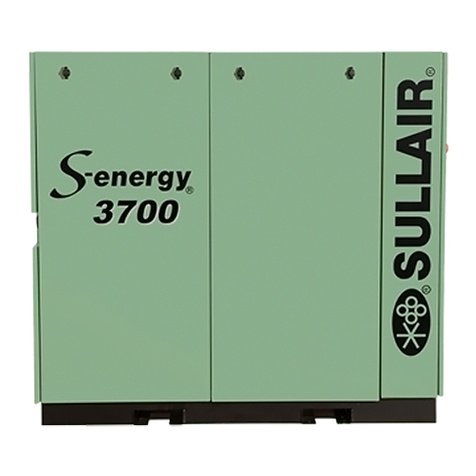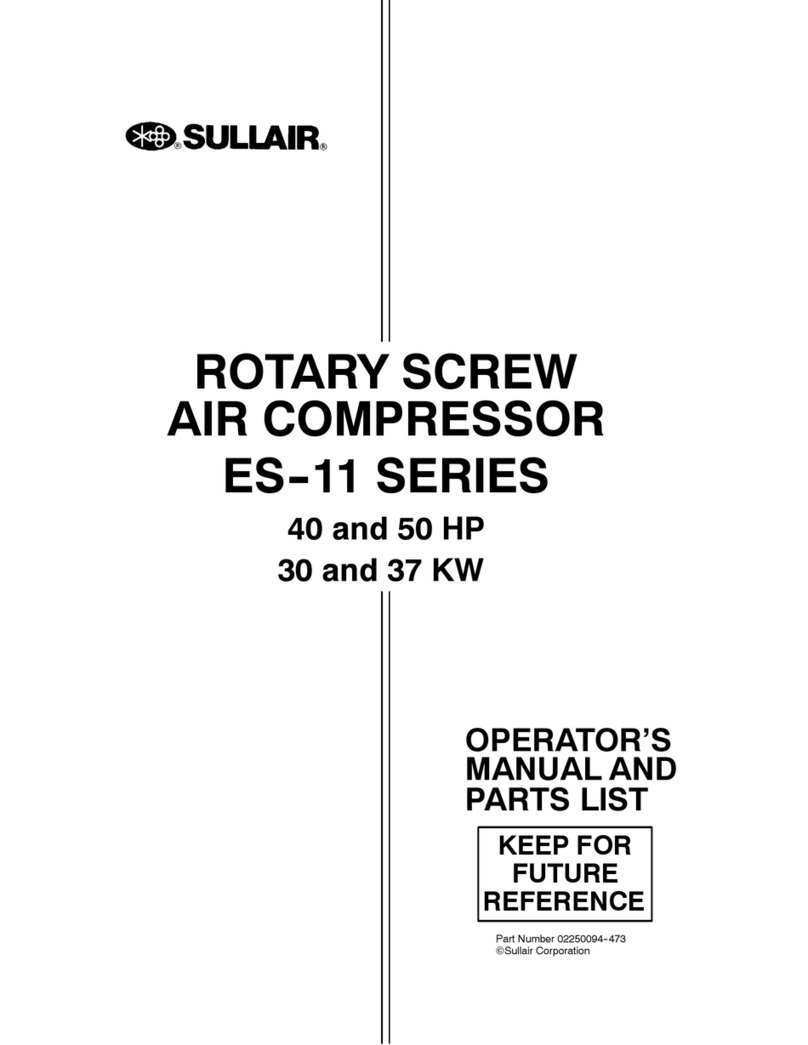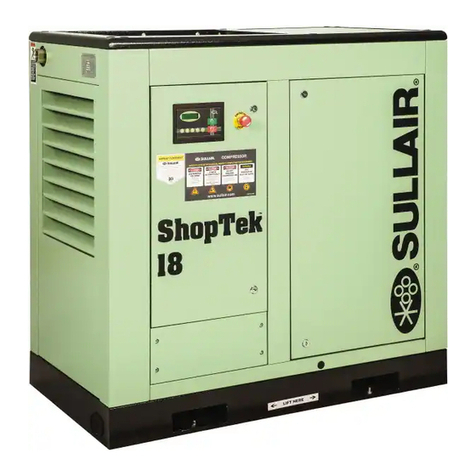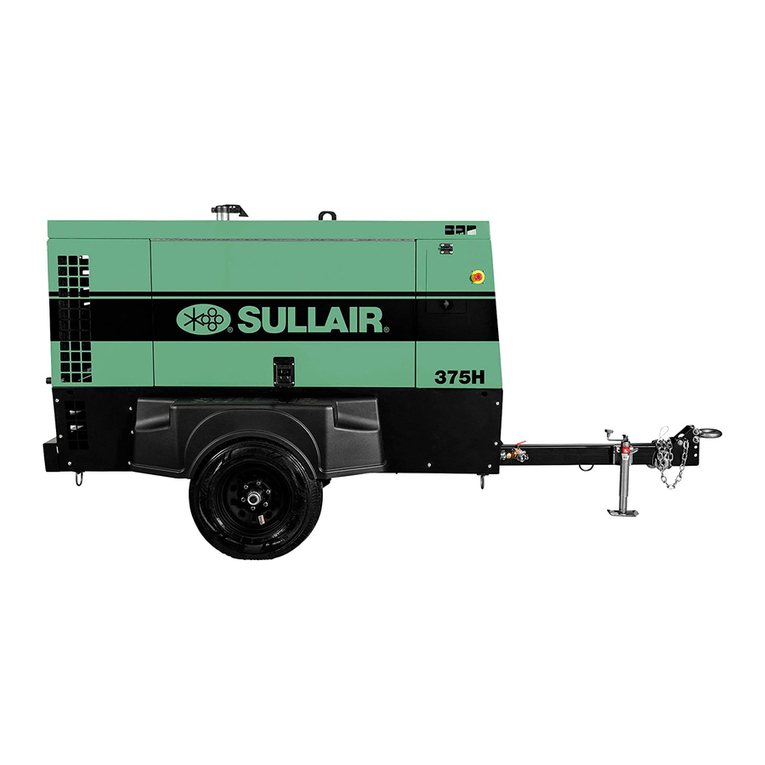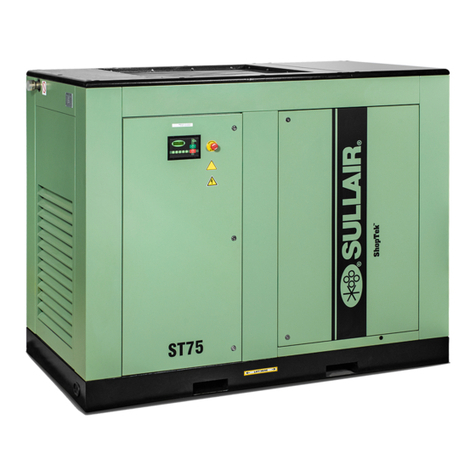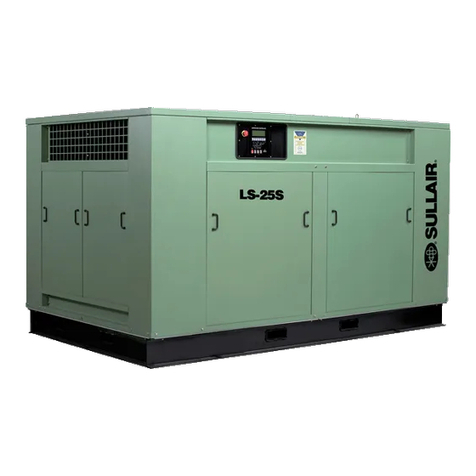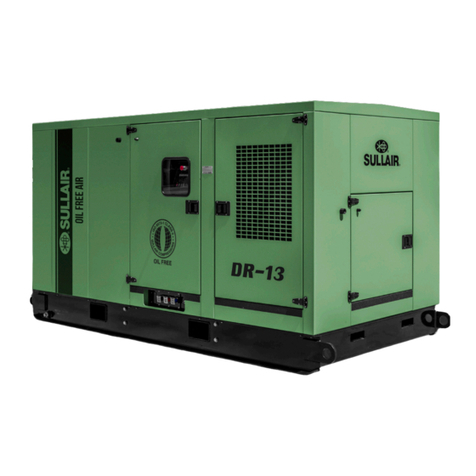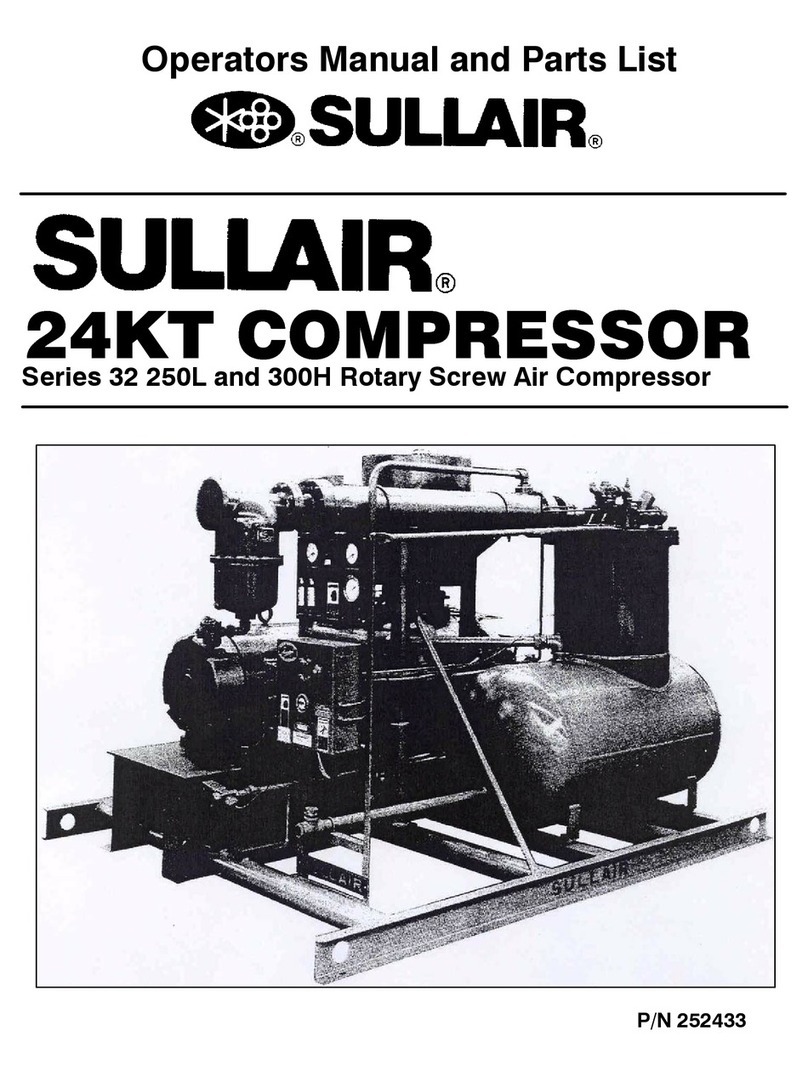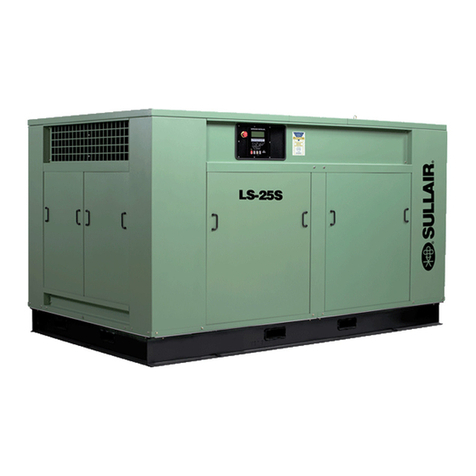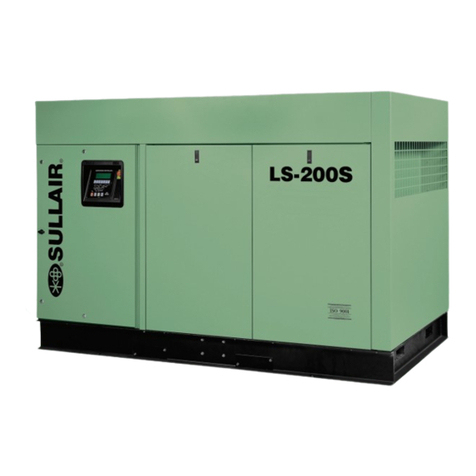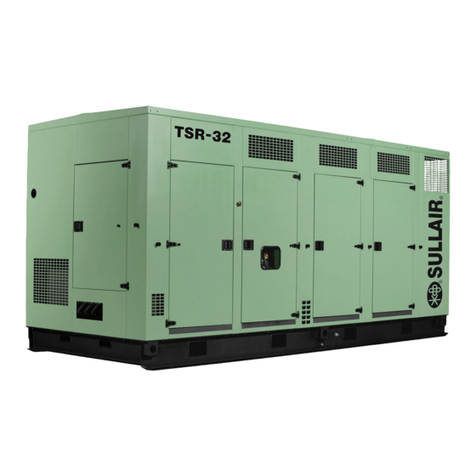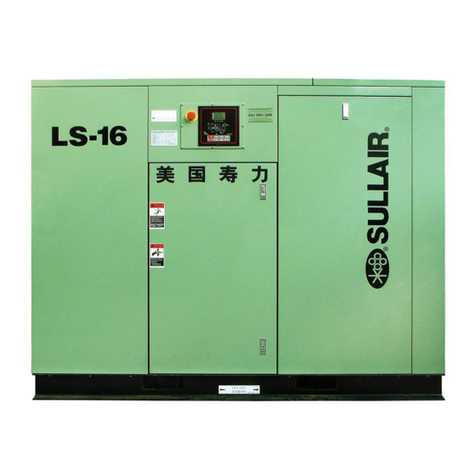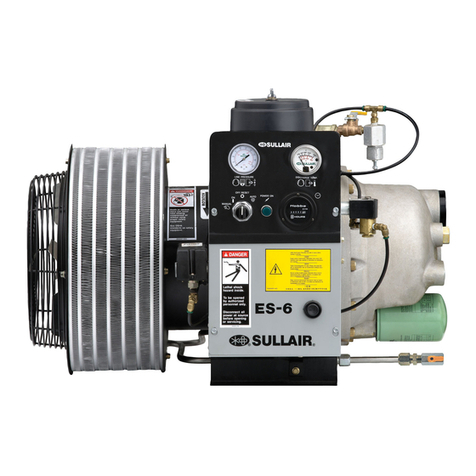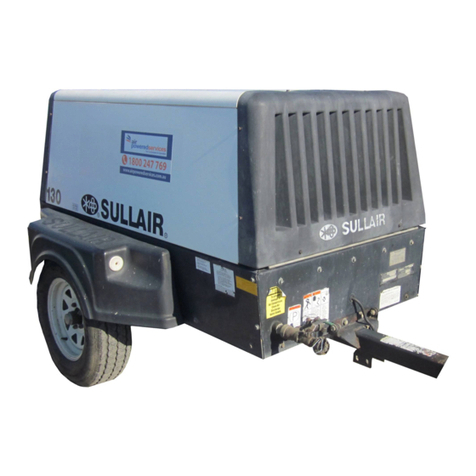
375 Caterpillar Standard and Aftercooled/Filtered Operator’s Manual and Parts List
DESCRIPTION
The engine radiator, charge air cooler, and the compressor
uid cooler are next to each other allowing the fan air to
push through all three simultaneously. As air passes
through the uid cooler, the heat of compression is
removed from the uid. The compressor’s high capacity
fuel tank contains enough fuel for one eight hour shift
under normal operating conditions.
SULLAIR COMPRESSOR UNIT,2.3
FUNCTIONAL DESCRIPTION
Sullair compressors are single-stage, positive
displacement, ood lubricated-type compressors that
provide continuous (pulse-free) compression to meet
various demand loads. Sullair compressors require no
routine maintenance or inspection of their internal parts or
systems. The compressor works by injecting uid into the
compressor unit where it mixes directly with the air as the
rotors turn: the rotor’s rotation compresses the air. The
uid ow has three main functions:
It acts as a coolant, to control the rise of air1.
temperature which is generated by compression (heat
of compression).
Seals the leakage paths between the rotors and the2.
stator and also between the rotors themselves.
Lubricates the rotors allowing one rotor to directly3.
drive the other.
After the air uid mixture is discharged from the
compressor unit, the uid is separated from the air. At this
time, the air ows to the service line and the uid is cooled
in preparation for re-injection.
COMPRESSOR COOLING2.4
AND LUBRICATION SYSTEM,
FUNCTIONAL DESCRIPTION
Refer to Figure 2-2. The compressor cooling and
lubrication system is designed to provide adequate
lubrication as well as maintain the proper operating
temperature of the compressor. In addition to the uid
cooler and interconnecting piping, the system consists also
of three other components: a uid lter, thermal valve, and
a fan which perform the following functions:
The uid lter removes and collects any contaminants •
in the uid.
The thermal valve functions as a temperature•
regulator directing uid either to the cooler or to the
compressor unit.
The fan pushes air through the cooler dissipating the•
heat resulting from compression of the uid.
The functions of the lubrication system are explained in
more detail below. Fluid is used in the system as a coolant
and as a lubricant: the sump serves as the uid reservoir.
At start-up, uid ows from the sump to the uid thermal
valve. Fluid circulation is achieved by forcing the uid from
the high pressure region of the sump to a lower pressure
area in the compressor unit. A minimum pressure device
(See Compressor Discharge System, Functional
Description on page 14) is provided to assure adequate
uid ow under all conditions. When entering the thermal
valve upon start-up, the uid temperature is cool and thus
it is not necessary to route it through the cooler. The uid
ows through the uid lter and on to the compressor unit
bypassing the cooler. As the compressor continues to
operate, the temperature of the uid rises and the
thermostatic control opens, allowing a portion of the uid
into the cooler.
When the temperature reaches 155°F (68°C), the
thermostat is fully open allowing all uid entering the
thermal valve to ow to the cooler.
The cooler is a radiator type that works in concert with the
engine fan. The fan pushes air through the cooler
removing the heat from the uid. From the cooler, the uid
is then routed back through the uid lter. All uid owing
to the compressor unit passes through this lter. The uid
leaving the lter ows to the compressor unit where it
lubricates, seals and cools the compression chamber; and
lubricates the bearings and gears.
Fluid Cooler1.
Engine2.
Compressor3.
Thermal Valve4.
Fluid Filter5.
Receiver Tank6.
Figure 2-2: Compressor Cooling and Lubrication
System

